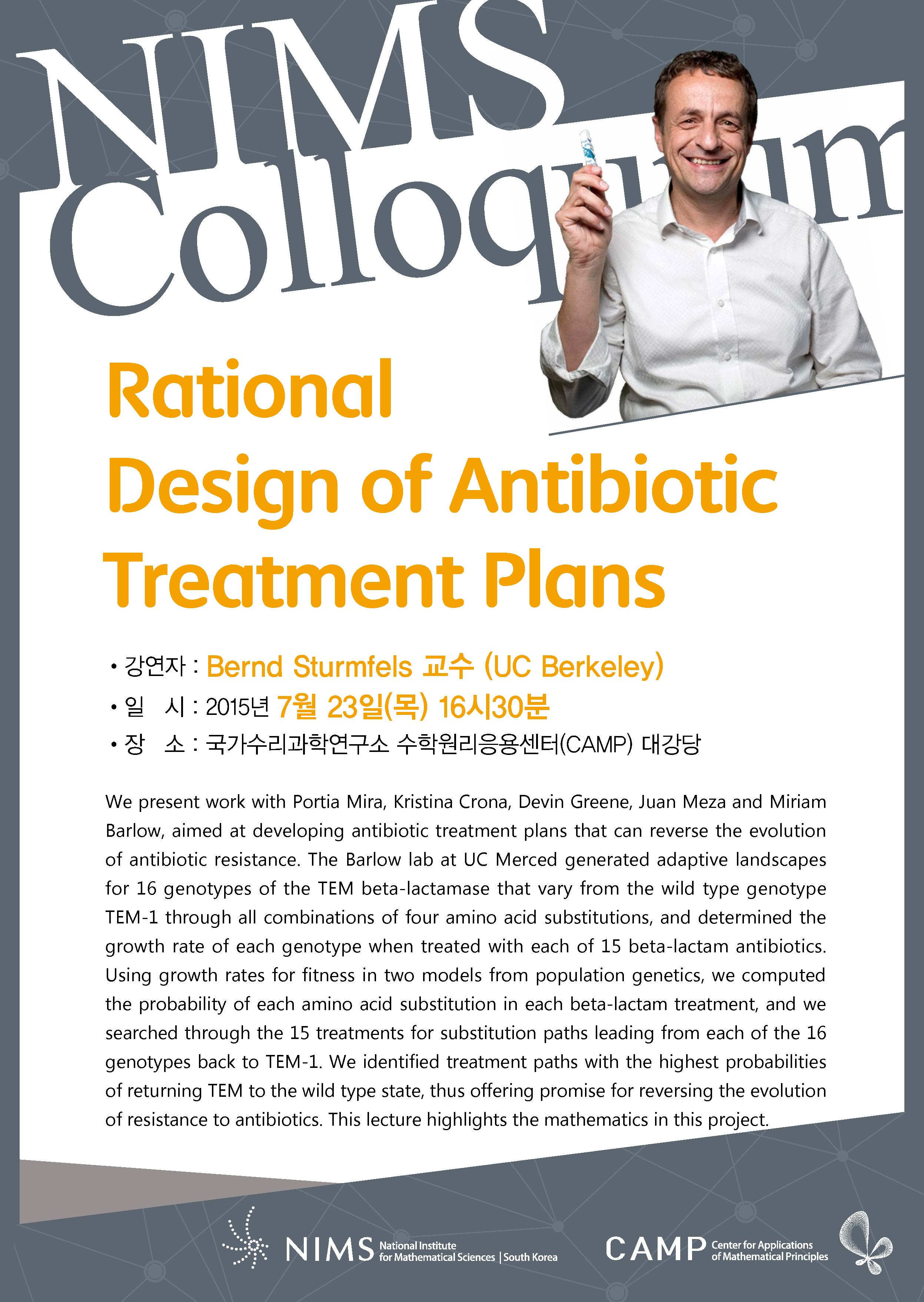학술행사
Rational Design of Antibiotic Treatment Plans
등록일자 : 2015-07-14- 발표자 Bernd Sturmfels (UC Berkeley)
- 기간 2015-07-23 ~
NIMS Colloquium
■ 연 사 : Bernd Sturmfels 교수 (UC Berkeley)
■ 일 시 : 2015년 7월 23일(목) 16시30분
■ 장 소 : 국가수리과학연구소 수학원리응용센터(CAMP) 대강당
■ Title: Rational Design of Antibiotic Treatment Plans
■ Abstract : We present work with Portia Mira, Kristina Crona, Devin Greene, Juan Meza and Miriam Barlow, aimed at developing antibiotic treatment plans that can reverse the evolution of antibiotic resistance. The Barlow lab at UC Merced generated adaptive landscapes for 16 genotypes of the TEM beta-lactamase that vary from the wild type genotype TEM-1 through all combinations of four amino acid substitutions, and determined the growth rate of each genotype when treated with each of 15 beta-lactam antibiotics. Using growth rates for fitness in two models from population genetics, we computed the probability of each amino acid substitution in each beta-lactam treatment, and we searched through the 15 treatments for substitution paths leading from each of the 16 genotypes back to TEM-1. We identified treatment paths with the highest probabilities of returning TEM to the wild type state, thus offering promise for reversing the evolution of resistance to antibiotics. This lecture highlights the mathematics in this project.

NIMS Colloquium
■ 연 사 : Bernd Sturmfels 교수 (UC Berkeley)
■ 일 시 : 2015년 7월 23일(목) 16시30분
■ 장 소 : 국가수리과학연구소 수학원리응용센터(CAMP) 대강당
■ Title: Rational Design of Antibiotic Treatment Plans
■ Abstract : We present work with Portia Mira, Kristina Crona, Devin Greene, Juan Meza and Miriam Barlow, aimed at developing antibiotic treatment plans that can reverse the evolution of antibiotic resistance. The Barlow lab at UC Merced generated adaptive landscapes for 16 genotypes of the TEM beta-lactamase that vary from the wild type genotype TEM-1 through all combinations of four amino acid substitutions, and determined the growth rate of each genotype when treated with each of 15 beta-lactam antibiotics. Using growth rates for fitness in two models from population genetics, we computed the probability of each amino acid substitution in each beta-lactam treatment, and we searched through the 15 treatments for substitution paths leading from each of the 16 genotypes back to TEM-1. We identified treatment paths with the highest probabilities of returning TEM to the wild type state, thus offering promise for reversing the evolution of resistance to antibiotics. This lecture highlights the mathematics in this project.















